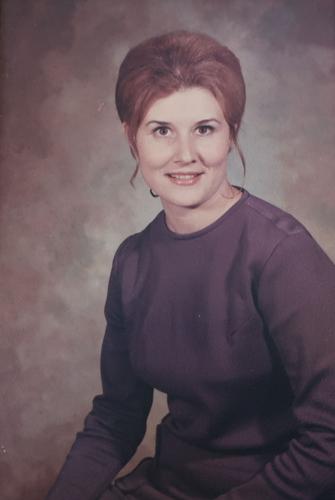Suspect in Cherry Hills Village woman’s killing goes to trial 40 years after her death
Prosecutors say even though it took 40 years to identify the man accused of killing a young woman in her Cherry Hills Village home in 1981, his name was the only missing piece all along, because he had left his DNA behind.
David Dwayne Anderson, now 63, is on trial for charges of premeditated first-degree murder and felony murder in Arapahoe County. Authorities arrested him in February 2021 after tracing him to Cozad, Nebraska.
“Even 40 years ago, we knew who did this. We just didn’t know his name,” Deputy District Attorney Grant Grosgebauer said during opening arguments Monday.
Anderson’s trial is scheduled through March 8.
Sylvia Quayle’s father found her dead in her Cherry Hills Village home, where she lived alone, on the morning of Aug. 4, 1981. Quayle, 34, had been shot, stabbed several times and sexually assaulted, according to an autopsy report.
The coroner ruled the stab wounds as Quayle’s cause of death, with the gunshot listed as the secondary cause.
Blood and signs of struggle covered Quayle’s house. Phone lines in and outside the house had been cut.
Her sister spoke to her around 11 p.m. Aug. 3, and was the last person to talk to Quayle, prosecutors said.
Quayle’s sister is still alive, but both her parents have died.
Arrest made in cold case murder of Cherry Hills Village woman in 1981
But Anderson’s defense attorneys say investigators have from the beginning ignored the most obvious suspect in Quayle’s killing — an abusive boyfriend who had just a few years earlier savagely beaten and raped her in the same way she was assaulted the night of her death, and a man Quayle herself told family would be the culprit if anything happened to her.
But when a relative of Quayle’s told Cherry Hills police that Quayle’s boyfriend, Pete Romaine, might have been responsible, they didn’t consider him as a suspect, Anderson’s defense attorneys argued. They didn’t look at him until about 12 years later.
This is despite Romaine’s DNA being found on a knife at the scene of Quayle’s death, Anderson’s attorneys said.
“They let the most obvious suspect pass by,” one said during opening statements.
Quayle and Romaine had dated on and off for a few years, and had begun seeing each other several months before Quayle’s killing.
Prosecutors’ case depends heavily on forensic evidence, given that there weren’t direct witnesses who saw or heard the attack.
Man charged with first-degree murder for Sylvia Quayle's death in 1981
At first investigators ran into dead end after dead end, interviewing people who knew Quayle but getting nowhere. Periodic breaks in the case over decades, fueled by developments in DNA testing capabilities, punctuated its mostly cold trail.
Evidence from the scene of Quayle’s killing had been preserved. Her attacker had left semen on her, and a DNA profile from the evidence was developed in 2000. Development of more DNA evidence from the same person collected from more sources followed in 2012.
United Data Connect, a company that uses DNA to solve cold cases, became involved in the investigation in January 2020.
United Data Connect sequenced a sample from the crime scene, and later identified people related to the person who had left DNA at the scene.
Anderson’s arrest affidavit says a United Data Connect investigator traveled to Cozad in January 2021 to try to collect DNA from Anderson. From Anderson’s trash, a DNA profile was eventually developed from a Vanilla Coke can, which matched evidence found at the crime scene.
Anderson agreed to an interview, Grosgebauer said, and claimed he did not know Quayle nor how his DNA ended up at the scene of her death.
But the investigation froze for about a decade when another man, Ottis Toole, said in 1983 he killed Quayle. He was already held on different murder charges when he was charged with Quayle’s death, but never tried for the case.
He and another man claimed they killed hundreds of people in the U.S. in the 1980s, and was convicted for six. But DNA testing ruled Toole out as Quayle’s killer in 1993, and the case was reopened.
Anderson’s defense attorneys have latched onto that delay, saying investigators “got caught hook, line and sinker” by his false confession.
They said the case isn’t as simple as prosecutors will characterize, arguing the evidence points to a targeted attack on Quayle by someone known to her.
“We ask that you ask the questions that the government has failed to ask over the last 40 years,” one said. “Listen to Sylvia Quayle.”





